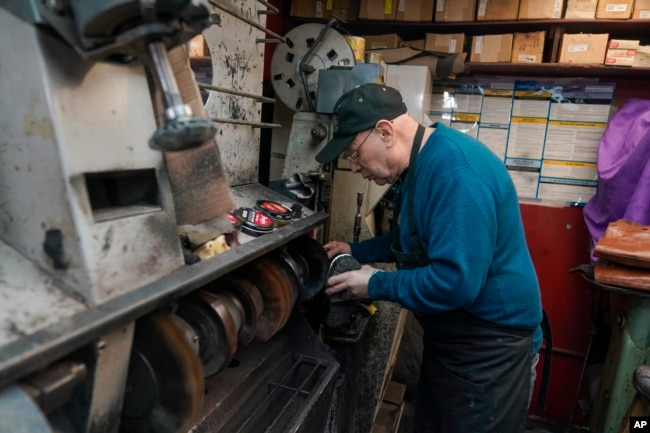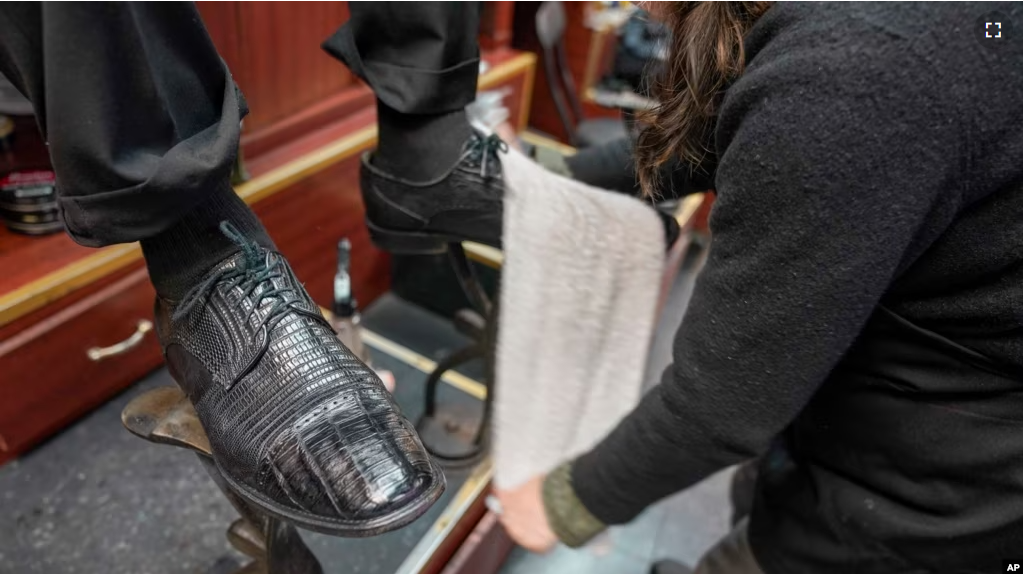Penn Station Shoe Repair and Shoe Shine is a small shoeshining business in New York City. On a recent weekday, customers sat down at the shoeshine business and pulled out newspapers and phones to read while their shoes got shined. The shoeshiners cleaned the footwear and added an oily substance to protect the shoes’ leather material. When finished, the customers paid eight dollars for the work.
A sign hanging at the little business reads, “We’re not God, but we do save soles.”
Shoeshining has a long history in the United States, dating back hundreds of years. But today, the tradition of getting a quick shine is weakening. Shoeshine stands are disappearing in cities and towns across the country.
The COVID-19 pandemic intensified the business decline. More people work from home than in the past. And it has become popular to wear more casual work clothes. All this means fewer customers for shoeshining businesses.
Nisan Khaimov owns the Penn Station stand. He said his stand would shine 80 to 100 shoes each workday before the pandemic. Now it is between 30 to 50 from Tuesday to Thursday and even fewer on Mondays and Fridays. The work-from-home model that is common across America is hurting his business.
“Until people come back to work, the problems will not be solved,” said Khaimov.
Rory Heenan is a 38-year-old accountant from Philadelphia, Pennsylvania. He said as a young boy he would take the train with his father on his way to work one Friday each month and watch him get a shoeshine.
“I would just sit here as a little guy, you know, observing,” he said. “And here I am, you know, 30 years later, doing the same thing. So, it’s certainly something that’s passed down over time.”
Across town, Jairo Cardenas is also feeling the losses. Business at Alpha Shoes Repair Corporation is down 75 percent from before the pandemic. His business used to shine 60 or 70 shoes a day. Now, on a good day, he shines shoes for 10 to 15 customers.

Shoe repairs generally bring in more money than shines. At David Mesquita’s Leather Spa, which operates five shoe repair and shine businesses in the area, the repairs are the major part of its sales. But shoeshines are still an important offering to bring people in as most shoe repair businesses do not have the service.
Before the pandemic, Leather Spa had four shoeshine chairs at its business inside New York’s Grand Central Terminal. It employed six shoeshiners. Together, they would complete about 120 shines a day. Now, there are three shoeshiners who do 40 or 50 shines a day at most.
But Mesquita is seeing people slowly coming back. His December 2022 shoeshine numbers were up 52 percent compared with December 2021.
“Traffic is slowly coming back in, we’re seeing the commuters come in and everything, but we’re still not back 100 percent of what we were,” Mesquita said.
He added that shoeshining is not something that will ever fully go away.
“People like to treat themselves,” he said, “whether it’s once a week or twice a week or, you know, once every two weeks. It’s just nice.”
I’m Caty Weaver.
________________________________________________________________
Words in This Story
customer –n. one that buys a product or service
sole –n. the part of a shoe on which the bottom of the foot rests.
decline –n. to become less in amount
commuter –n. to travel from home and back on a usual basis for work (often between a suburb and a city)
